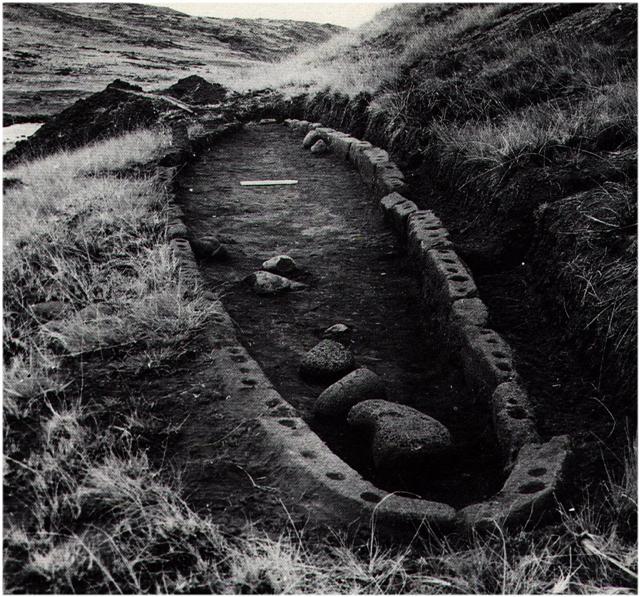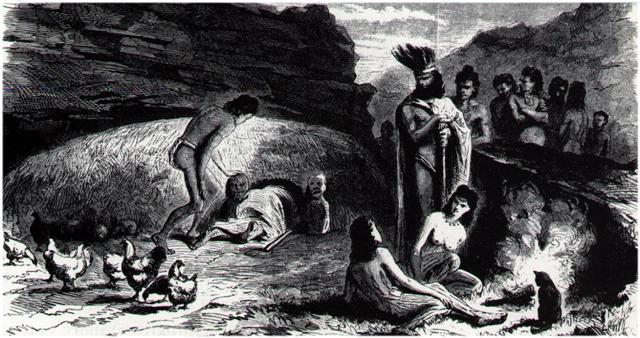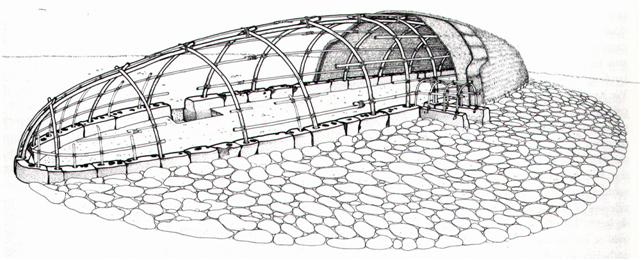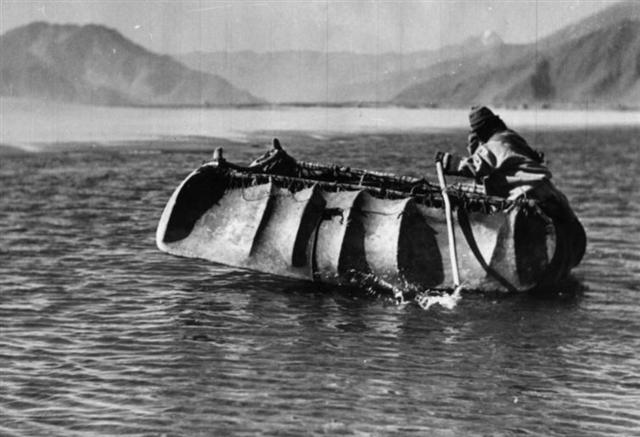The ancient Babylonians imagined the sky roof above was like the inside of an overturned boat: ... Before the beginning of a new 'year' (halfyear) it is not yet determined what will come. According to the Babylonian view there was a 'chamber of hazard' where the sky roof meets the earth:
At the letter i above there is a 'Versammlungsraum mit der Schicksalskammer' (assembly hall with room for deciding the outcome). The picture and information is from Peter Jensen, Die Kosmologie der Babylonier. My parents taught me once, now a long time ago, how at the beginning of a new year it was the custom of old to pour melted lead (or tin) into a pot with cold water. The forms of the resulting small metal figures would predict - if you used your imagination - what would come in the new year ...
The ancient Egyptians seem to have thought the Sun in the evenings went away through a hole at the horizon in the west, moved along the back side of Nut during the night (out of sight because the sky roof was in the way), then to reappear fresh as new (to be reborn) in the morning through another hole at the horizon in the east:
... Two men came to a hole in the sky. One asked the other to lift him up. If only he would do so, then he in turn would lend him a hand. His comrade lifted him up, but hardly was he up when he shouted for joy, forgot his comrade and ran into heaven. The other could just manage to peep over the edge of the hole; it was full of feathers inside. But so beautiful was it in heaven that the man who looked over the edge forgot everything, forgot his comrade whom he had promised to help up and simply ran off into all the splendour of heaven ... As to the Polynesians we should rely on the framework described in the following pregnant comments by Van Tilburg: ... It is certainly true that the exterior form of the hare paenga, when the superstructure and thatch are intact, resembles an overturned boat, with the form established by the foundation. However, it is equally true (and perhaps equally important) that the configuration of the foundation is otherwise most like the Rapa Nui vulva design called komari.
The komari is the quintessential female symbol which is everywhere prominent in Rapa Nui art, often carved in rock and wood, incised on human crania, and painted on the human body. ... Up to the present time, fertility spells for fowls have played an important role. Especially effective were the so-called 'chicken skulls' (puoko moa) - that is, the skulls of dead chiefs, often marked by incisions, that were considered a source of mana. Their task is explained as follows: 'The skulls of the chiefs are for the chicken, so that thousands may be born' (te puoko ariki mo te moa, mo topa o te piere) ... As long as the source of mana is kept in the house, the hens are impregnated (he rei te moa i te uha), they lay eggs (he ne'ine'i te uha i te mamari), and the chicks are hatched (he topa te maanga). After a period of time, the beneficial skull has to be removed, because otherwise the hens become exhausted from laying eggs ... In the hare paenga foundation form, the komari is cut in stone and embedded in the earth, the cosmologically female realm.
Spanning above, over and virtually into this komari foundation is the ridgepole 'backbone' and curved rafter 'ribs' of what I surmise to be a symbolically male form. In short, we have a shelter which may be metaphorically understood as 'the sky father enclosing his progeny as he embraces the earth'. Those progeny entered and departed this male/female, earth/sky form through a low, dark tunnel which may be logically compared to the birth canal.
This postulated symbolism does not, of course, negate the 'overturned boat' comparison, since Polynesian canoes were often likened to the bodies of great ancestors or to Tane as First Man. The canoe which transported the first exploratory voyage to Rapa Nui was said to have been called The Living Wood, a reference to Tane. Indeed, it is likely that the 'overturned boat' concept and its relationship to home, hearth and lineage, which is so graphically visible, was commonly understood (hence its retention in the oral literature), while the more esoteric godly connections, perhaps along the lines of those explored here, were known only by spiritual leaders ...
|
|||||||||||||||||||||||||||||||||||||||||||||||||||||||||||||||||








